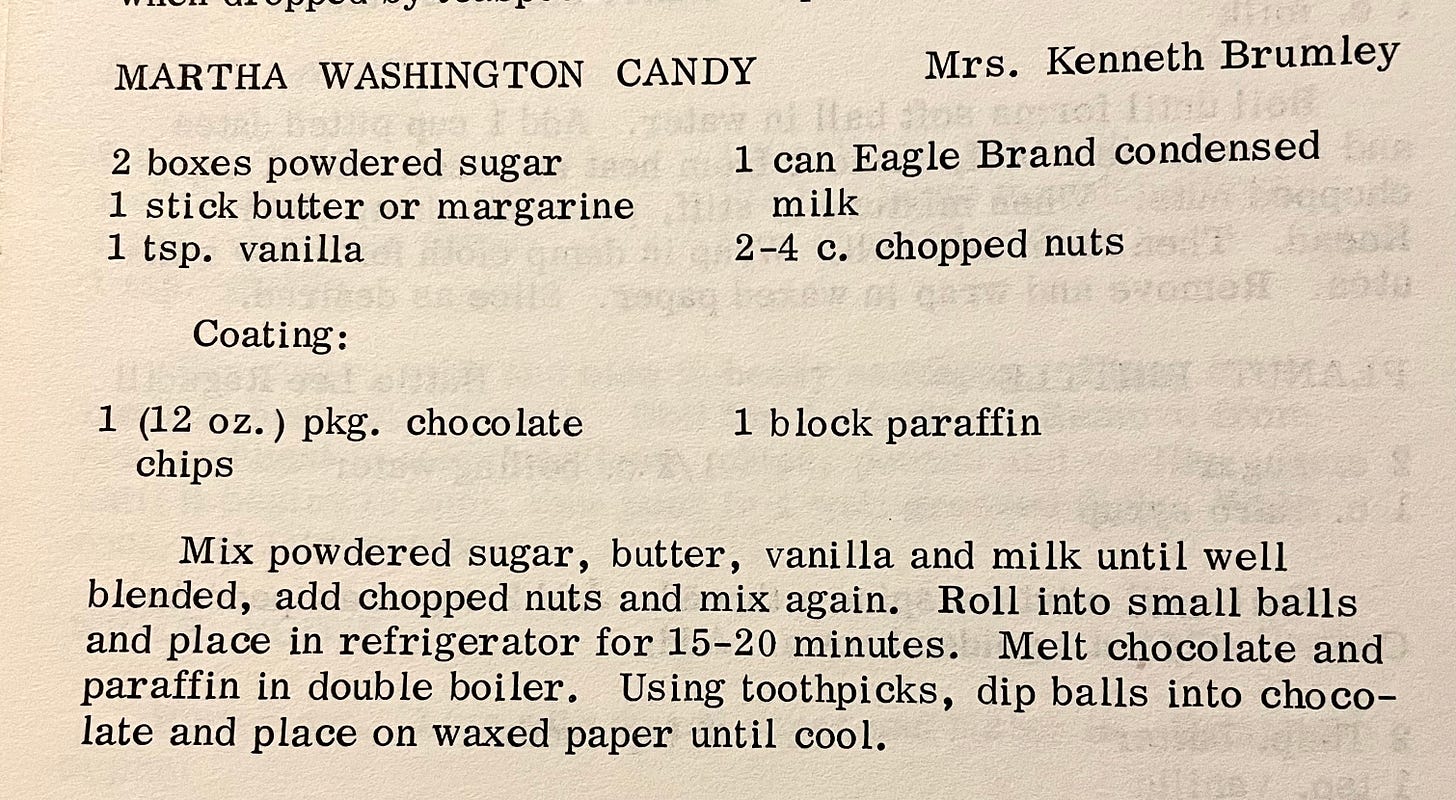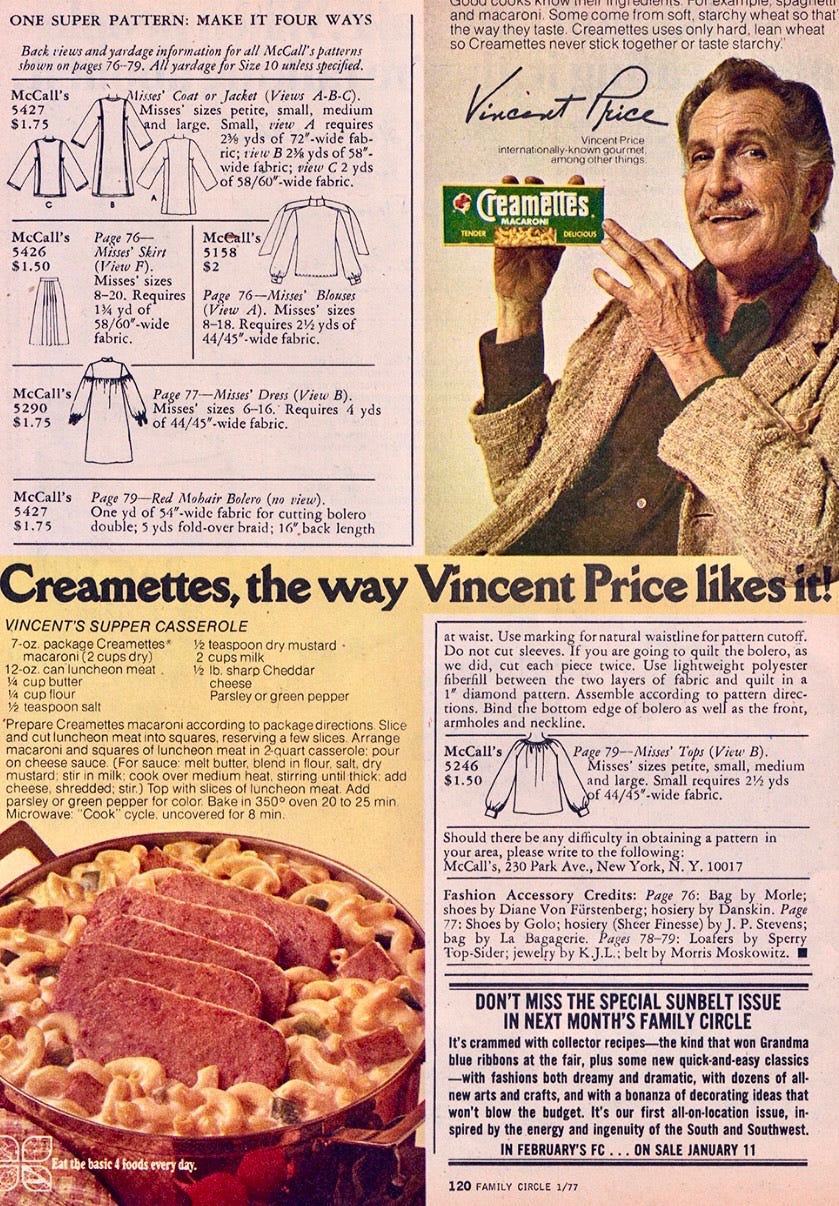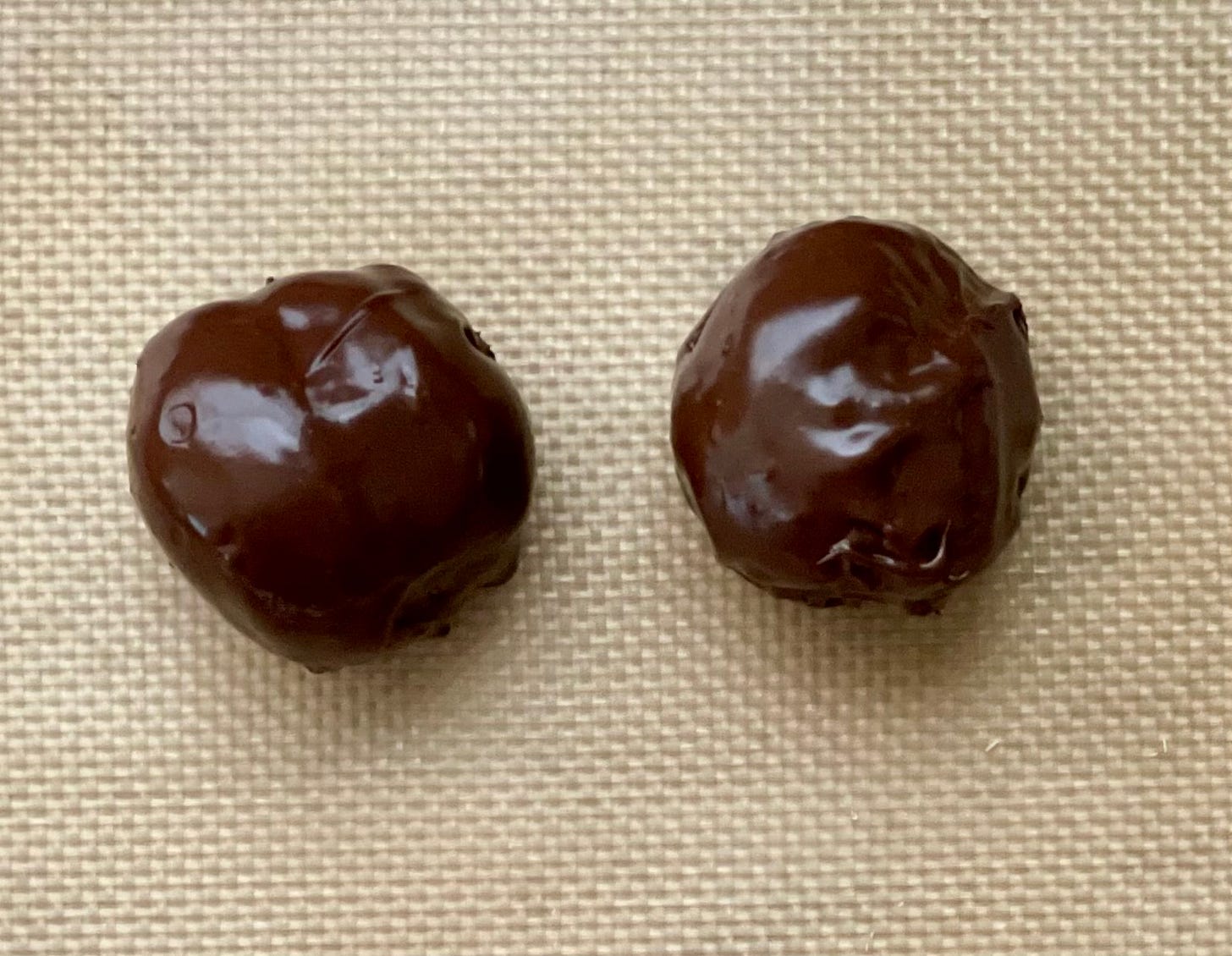Vintage Recipe Roulette: Technically edible Martha Washington Candy
Are ALL of the ingredients in this confection food? None of your beeswax.
In case this is your first time visiting the Department of Antediluvian Disquietude and you missed the first installment, this is the latest in a series of Vintage Recipe Roulette reviews using only recipes from Talk About Good, my grandmother’s 1975 community church cookbook. In just 164 pages, this collection of homestyle recipes encapsulates the unlikely intersections of 1800s frontier cuisine, post-war convenience foods, and the mid-century American fetishization of canned chow mein noodles. It is untested, unstandardized, and unmatched in its vintage glory in my opinion. Some of the recipes are amazingly good! And some are amazingly…not. Is the following recipe a joyful recreation of a historical favorite, or an incredibly lifelike, petroleum-based, mid-century pretender?
This week, an old fashioned, truffle-like sweet called Martha Washington Candy. It’s pretty pedestrian until you get to that last ingredient: paraffin wax.
It’s a well-documented delicacy from Colonial America, a recipe developed by the grand old first First Lady of these United States, Martha Washington!..is what I would say if I didn’t know better. I’ve developed a skeptical eye after years of vintage cookbook studies, though, and I also lived through the late 20th-century, when pseudo-celebrity endorsements really took off. Did Michael Jordan really wear Hanes? Did the real E.T. snack on Reese’s Pieces? Did Vincent Price really eat Creamettes Pasta Mystery Meat Casserole?
Well, the answer to all of those might be yes…but often celebrity endorsements are transactional only, and in this case, there doesn’t even seem to have been any money exchanged. This candy has nothing whatsoever to do with Martha Washington.
It’s an approximation of candies made by the Martha Washington Candy Company in the late 1800s to early 1900s, and though a lot of the details are lost to history, there are enough in this Digital Research Library of Illinois article about the company’s founder to establish that its history doesn’t go back much farther than the 1890s, almost 100 years after Martha’s death. It was hugely successful, with factories and storefronts in several states, as a sort of re-imagining of the original Elie Sheetz Candies Company that indexed for the consumer the feeling of wholesomeness, honesty, originality, and patriotism.
Like a lot of candy companies, it doesn’t seem to have made it through the Great Depression, and that’s exactly the kind of history that often results in copycat recipes in community cookbooks and food blogs — people nostalgic for a childhood sweet they can’t get anymore figure out how to make something that hits the right note.
I can’t find an old manufacturer’s label, unfortunately, but the meager food labeling laws of the time meant that it might not have helped me with my main question anyway: Did the original have paraffin wax in it? I don’t think I can find out for sure.
The second question, since I’m going to make this and presumably consume it: Is paraffin wax safe for human consumption? Welllll…yes and no. It’s classified as non-toxic IF the one you have is refined to food grade. Just because something is non-toxic doesn’t make it edible, exactly — crayons, sand, and hand lotion are non-toxic, too, but hopefully none of you are eating those. Paraffin is not food, and it’s highly flammable at home kitchen temperatures, so I don’t suggest you make this recipe as written. I’m just going to make a little of it to try, and there are notes about how to make this WITHOUT technically edible food-grade wax at the end.
The third question is of course, WHY, why why why would someone ever write a recipe with wax in it?!? As crazy as it sounds, you’ve probably ingested a lot of wax over your lifetime. The FDA has approved a long list of wax, oil, and resin additives that are non-nutritive and non-toxic; they add shine, maintain texture, retain moisture, and prevent spoilage on everything from candy to baked goods to produce, including petroleum wax. You might have cute little cheese wheels in your fridge right now with a bright red coating on them, for example (Pro tip: Peel before eating. Little nutritional gems like that are why they pay me the big bucks). Waxes also extend expensive ingredients by dilution, and when you consider that Talk About Good is a Texas cookbook, it makes sense that a home chef might need something to keep chocolate from melting into a sodden pool, too.
Paraffin was probably already right on Mrs. Kenneth Brumley’s pantry shelf as well, because it was commonly kept in most 20th-century kitchens for use in some canning methods. (Please note that traditional method is no longer recommended. You can read more about it with the very thorough canning guide from the National Center for Home Preservation — it’s the standard that the USDA recommends.)
Okay. I think I’ve dragged my feet as long as I can. Here are the ingredients:
They’re shown here for listing and not in their relative ratios, so the recipe amounts need a little translating, don’t they? I often figure out vintage ingredient information by looking for old labels collectors have online — places like eBay and Pinterest often have photos, and vintage recipes published by product manufacturers sometimes have clues, too. A box of powdered sugar was 1 pound/ 16 oz. in 1975, and Eagle Brand Condensed Milk came in 14 oz cans — so today’s packages are unchanged. As for the nuts — two to four cups?!? The variation allows for the use of different kinds of nuts chopped in varying degrees of coarseness according to your preference and resources. You start by mixing the other filling ingredients (it’ll be the texture of cookie dough), and then add any nuts you like (it doesn’t say chopped, but it means chopped) until it’s a stiff enough mixture that you can roll it into little bonbons for coating. I ended up using about 3 c of unsweetened coconut, chopped almonds, and pumpkin seeds, combined.
I’ve halved the recipe, and I’m only adding wax to the coating for a few of these, so I weighed it out and divided it to make sure the ratio is the same. Paraffin comes in 4 oz. blocks, so this recipe is using a chocolate-to-wax ratio of 3:1. I found it much easier to chill before rolling into balls rather than after. If they get a little soft, pop them back in to chill before dipping.
Here is one without wax on the left, and with wax on the right.
I tempered it pretty haphazardly, melting about half of the chocolate in a double boiler, and then adding the rest off the heat to melt until fully smooth and just about body temperature. In another bowl, I put about 1 oz of chocolate with 1/3 oz of wax to melt together on the double boiler — the double boiler is doubly important there to reduce chances of fire. As you can see, even though the waxed chocolate is a little less viscous and coats more thinly, it doesn’t make a huge difference for appearance in these amounts.
They taste a lot like Almond Joy bars, but with an extra (and quite welcome) lovely buttery flavor (probably the um, butter). The wax ones are actually not weird. The coating seems to be just slightly glossier than tempered, although it probably looks quite a bit better than most untempered chocolate coatings. The waxed version cracks when you cut into it — a bit more snap — but the flavor is slightly less intense.
This is the easiest candy I’ve ever made at home with good results, and they’d be great to make at the holidays with kids — just don’t use the wax. The filling is endlessly customizable with any nuts, dried fruits, etc. As long as you add enough nuts and powdered sugar get the sticky filling to the point where it’s rollable, it’ll work. If you don’t want to bother with tempering, you could just roll them in more nuts, colored sugar, cocoa, or hemp hearts — I ate one before adding the chocolate, and it was delicious. You can also use candy melt wafers. I like Ghirardelli Melting Wafers the best (not an ad!)— no hydrogenated trans fats added, and a deep chocolate flavor, and they have a great tempering primer if you want to use regular chocolate. You’ll need more like a pound and a half to coat the full recipe without the wax added.
A similar but healthier (and easier) take on this concept is “energy bites” — you just mix any nut butter with oatmeal or powdered milk or whey powder until it’s firm enough, roll into balls, douse in coconut/cocoa/chopped nuts/hemp hearts/beef jerky/dehydrated crickets (hey man, whatever floats your boat), and store in the fridge. You might not be able to get away with transitioning from a daily Snickers break to totally unsweetened nut butter right off the bat…but you can often end up there if there’s a little dried fruit in the mix (y’all know how much I love raisins! *cries*), or mini chips. There are hundreds of recipes online, with so many flavors. They’re great for picky kids and adults looking for something sweet but nutrient-dense.
And, they have every bit as much to do with Martha Washington as these candies!
Zen and the Science of Candy Corn is a reader-supported publication that brings me great joy. You can literally give me your 2 cents with the tip jar button below.
Of course, if you’d like to subscribe, free or paid? I cannot tell a lie — that would be delicious.
And please feel free to share this post with any petroleum byproduct-loving psychopaths you know.









I totally remember that box of wax.
You're doing the lord's work with this cookbook. 😏😂